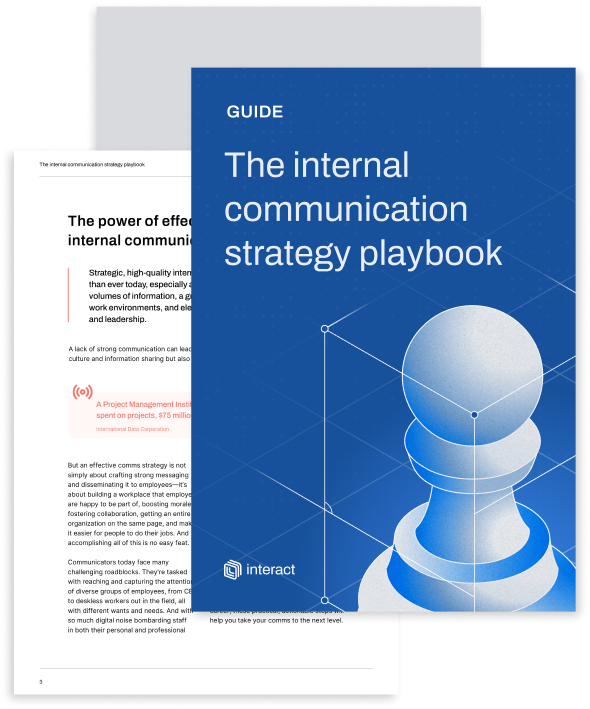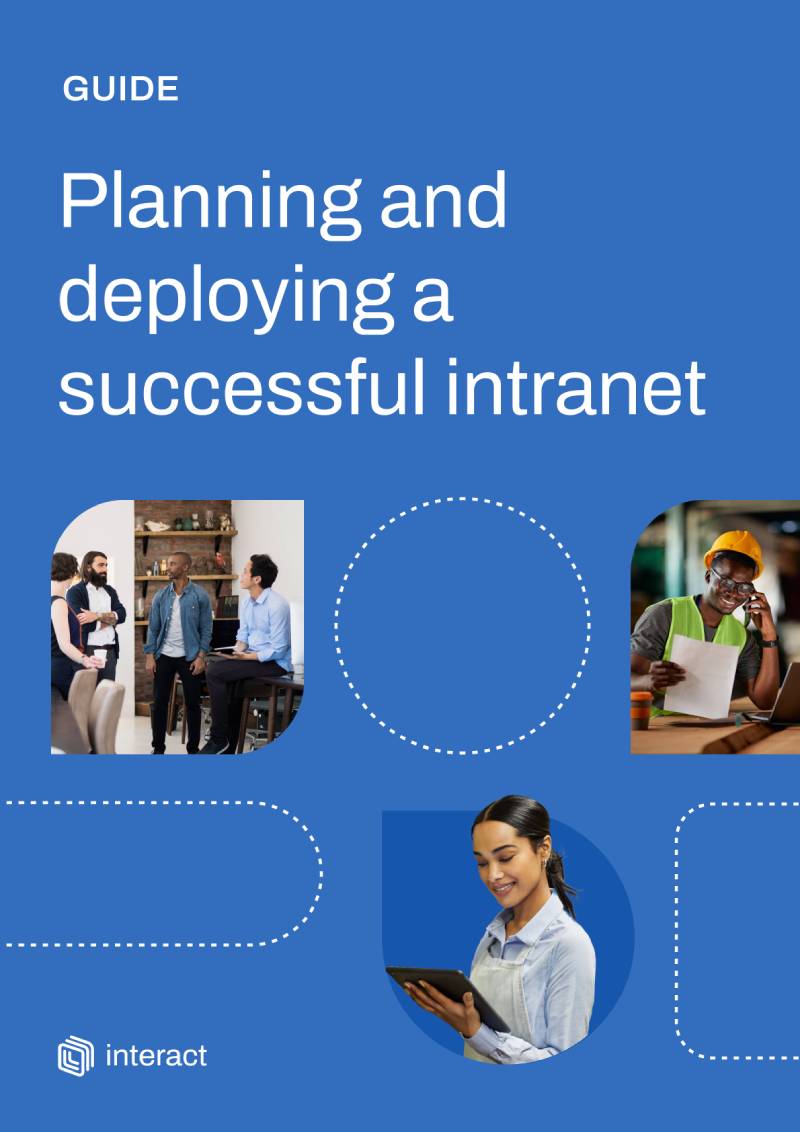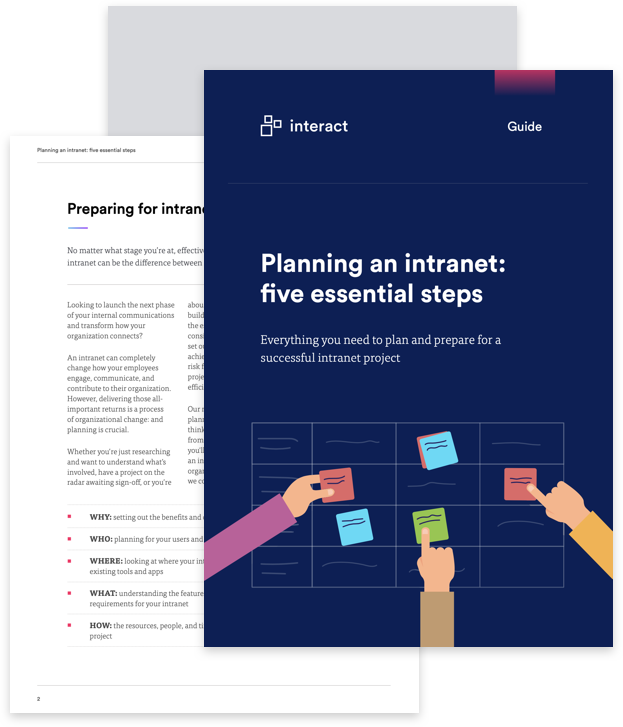Workplace communication statistics for 2023

Gathered from thousands of IT, HR, and Internal Communications professionals, Interact’s workplace communication statistics illuminate the challenges and opportunities facing workplace communicators today.
Emma Bramwell is Interact’s Head of Global Events & Campaigns
In 2022, as part of our ongoing program of events for HR and comms, Interact surveyed over 2,800 intranet and IC professionals.
With organizations continually changing how they work, we wanted to gain a better understanding of how IC, HR, Marketing, and other internal communicators feel about their work and the tools available to them right now.
Are comms technologies fit for purpose? Which are the most difficult parts of their jobs?
We know that since the beginning of the global pandemic in 2020, the work undertaken by many in the IC and HR fields has changed dramatically. Organizations now need to connect, engage, and mobilize their employees in a wider range of locations.
With this in mind, we polled attendees at 14 webinars throughout the year — the results are below.
Free guide – 14 steps to great internal communications
Workplace communication surveys and data
Before we get into the detail on the workplace communication statistics gathered in 2022, it is important to note that different questions were asked at each event. This resulted in response rates relative to the number of people present at each of the 14 webinars held between January and October 2022. For some surveys, there were hundreds of responses, while others produced fewer. Full details are outlined below.
To help us paint a comprehensive picture of workplace communication trends, we asked event attendees about internal communications priorities and challenges, the state of communications technologies, intranet software projects, and more.
Our respondents came from all major industries and levels of seniority, and the responses we received also covered a wide range of company sizes: from single-person consultants to vast global organizations with over 200,000 workers.
These results offer insights into the engagement, experience, and communications priorities being considered by HR, IC, and IT professionals right now. Notable highlights include:
- At one event, a quarter of respondents stated they find it hardest to communicate with Gen-Z employees
- In a poll with 241 respondents, over half said their communication was either “lacking the ability to really engage” or “uninspiring”
- Intranet software remains the single biggest comms channel for companies, with 50% of respondents to one survey saying intranets are their most effective way of connecting with employees
- In one survey about hybrid work (84 respondents), 44% of those surveyed believed hybrid working has had a negative impact on organizational culture
What does a digital workplace now look like?
At eight of our 14 events in 2022, we asked the same question about our attendees’ satisfaction with their digital workplaces; “Which best describes your current situation?”
Added together, we received over 400 responses.
- We don’t have plans to change our tech right now but would like more useful resources – 30%
- We have a perfect setup and just wanted to stay on top of latest trends - 30%
- We need to improve our employee comms and are interested in learning how an intranet can help - 18%
- We’re planning a new intranet project - 22%
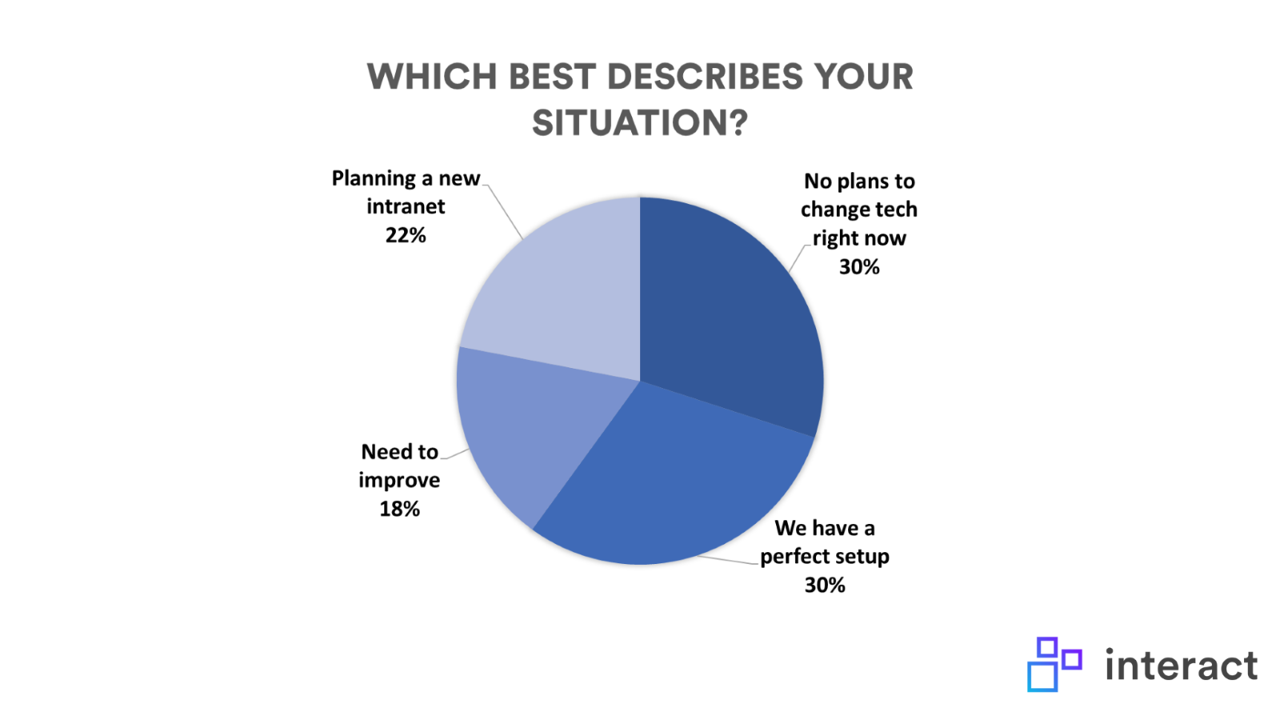
Insight: Although nearly a third of the responses indicate that communicators are happy with their current digital workplace, 48% were actively investigating resources to help them improve, and a further 22% are already engaged in the planning of a new intranet.
These findings suggest that the digital workplace remains in flux and that no single dominant model or platform has yet emerged, and this is despite the continued expansion of companies such as Microsoft and Meta into the digital workplace. With nearly three quarters of respondents actively seeking new information, we expect to see continued change and development throughout 2023.
Free guide to planning and deploying an intranet
How well are internal communications working?
The surveys mentioned above all pointed to a significant number of acknowledgements that organizations have scope to improve their employee communications.
To delve into this further, we asked attendees at one of our events, “How would you describe your current employee comms?” We received 241 responses.
- Creative, well planned, and delivered to all employees on channels they find engaging – 11%
- Great for the resources we have, but we would like more creative development and delivery – 31%
- Regular and informative but lacking the ability to really engage users or measure impact – 43%
- Uninspiring. We need to invest more to provide better experiences for our employees – 15%
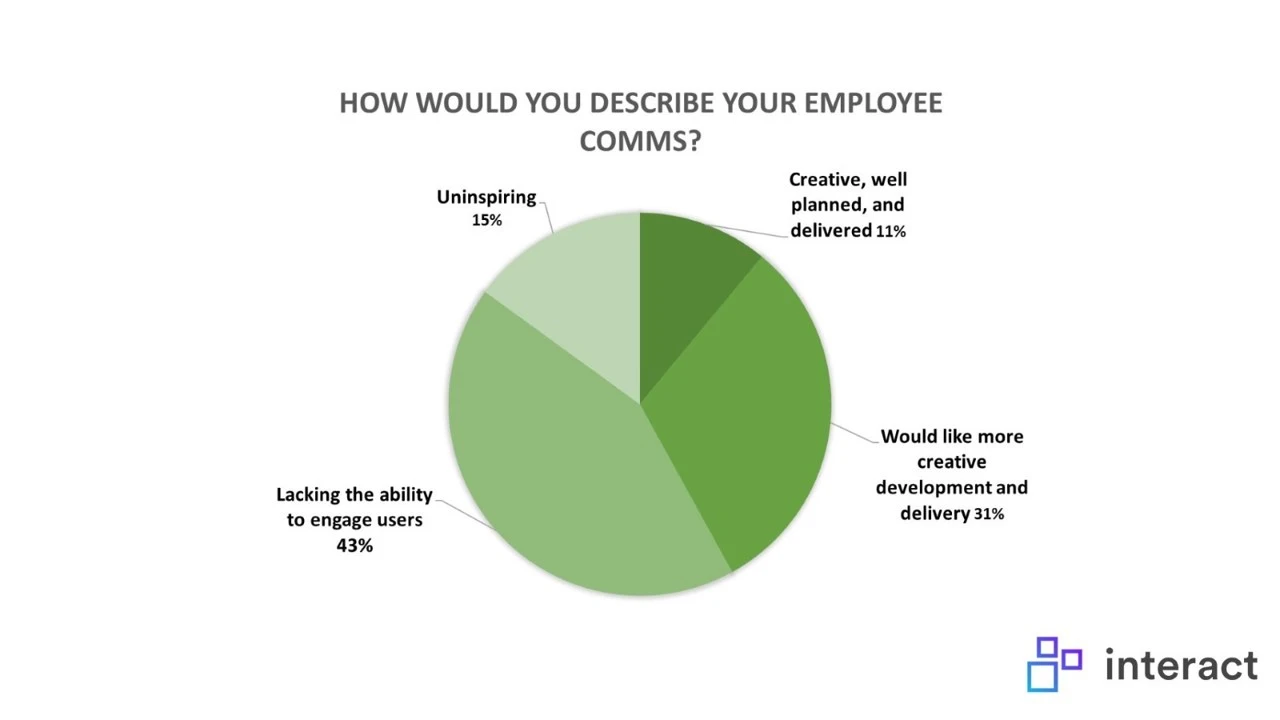
Insight: With just 11% of respondents feeling satisfied that their internal comms are sufficiently creative and well delivered, there is a clear desire for an advanced CMS intranet with email functionality, mobile notifications, digital signage, and more.
The biggest single area for development appears to lie in the need for a comms platform that is both engaging and measurable. It seems likely that many professionals lack access to such a tool because comms often take place on many different platforms, all with different metrics.
One solution to this is through an intranet platform that covers multiple comms channels and features in-built data analytics. This ensures there is a user-friendly way to monitor employee engagement and may reduce the costs incurred with third-party email or employee survey tools. By consolidating the organization’s email, digital signage, and mobile app services in one place, it may be easier to create engaging, measurable content.
What is the best way to communicate with employees?
Depending on the organization and its workforce, certain channels will be more effective than others. Our workplace communication statistics suggest that one of the benefits of an intranet is that it is the channel of choice for most respondents.
We received 152 responses to the question “Which is your most effective communication channel?”
- Digital signage – 3%
- Email – 36%
- Intranet – 51%
- Mobile app – 2%
- Other – 3%
- SMS / Text – 3%
- Third-party apps (Teams, Slack, etc.,) – 2%
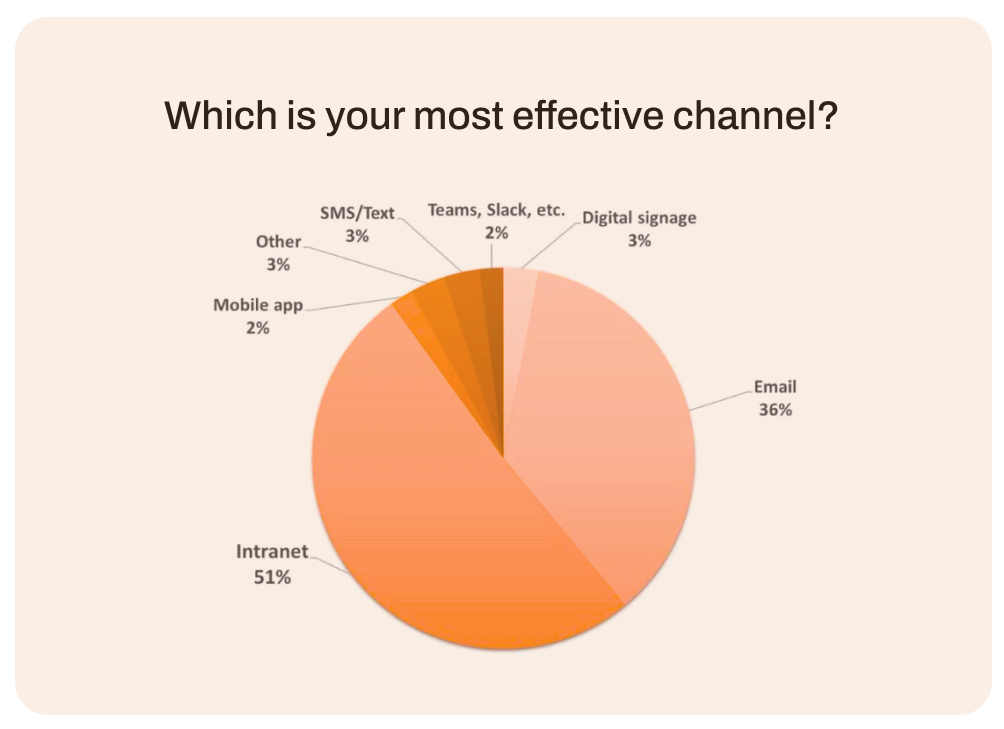
Insight: This question produced one of the most surprising employee communication data points for 2022. Despite the great shift to instant chat tools, most organizations we surveyed still overwhelmingly find that email and intranet are the most effective ways to reach employees.
It suggests that while mobile apps and third-party platforms such as Teams and Slack undoubtedly have a role in workplace comms, having a customizable digital hub that can also act as a gateway to the workplace remains vital.
As instant chat platforms are relatively nascent systems, many organizations have not yet set communications protocols for how to use Teams and Slack for company-wide announcements. This may change in the future of internal communications.
Free guide to multichannel communications
Culture in hybrid workplaces
It’s commonly believed that hybrid working is here to stay. While working from home dominated 2020 and 2021, the initial flourish of remote work is now being counterbalanced by companies returning to offices on a flexible basis.
We were interested in the effect this change has had on culture within organizations. We received 84 responses to the question “How has remote and hybrid working affected your organizational culture?”
- It’s actually improved, with people feeling more connected digitally – 35%
- It’s had a negative impact as people are less connected – 44%
- It’s made no difference – 21%
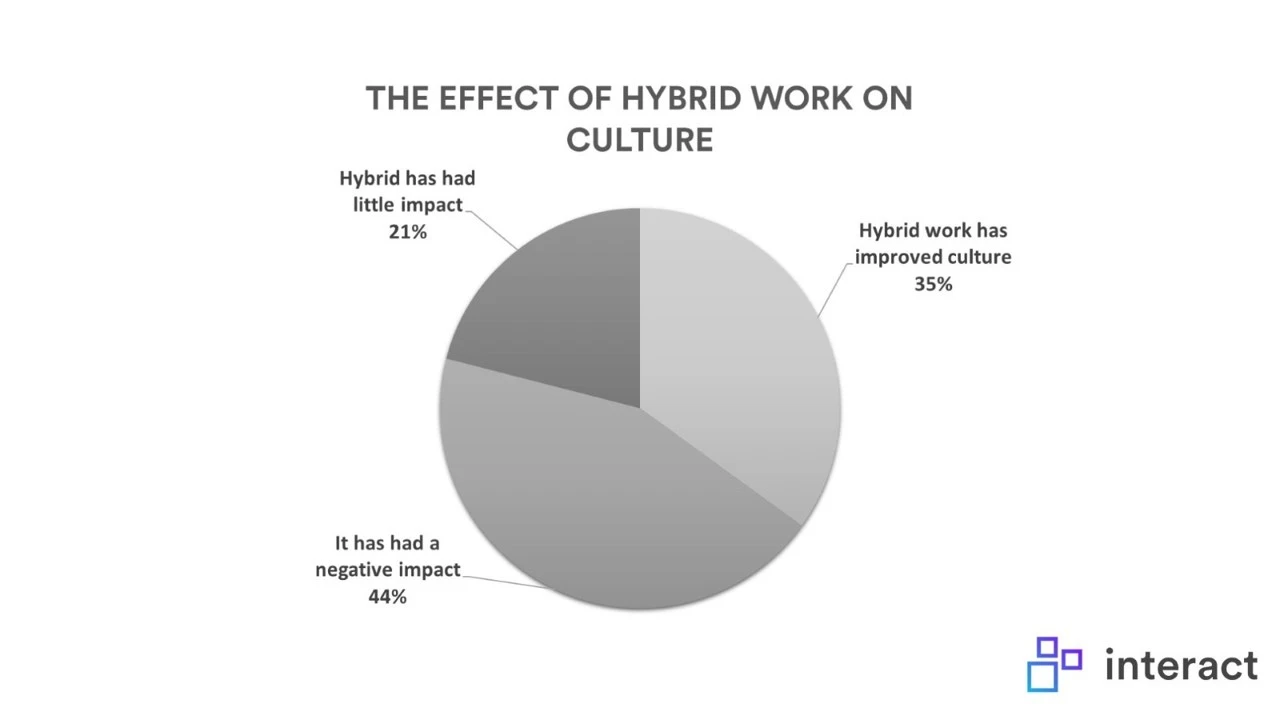
Insight: While many employees are already enjoying the advantages of flexible working, our respondents were conflicted about its impact on organizational culture. As yet, it seems there is no clear answer whether video calls and Teams chats can ever truly replace the serendipity and social benefits of meeting colleagues in real life.
In terms of organizational challenges and priorities for the coming year, this aspect of our workplace communication data suggests that we are still coming to terms with what hybrid working means. We expect to see companies continuing to wrangle with this issue throughout 2023. Many HR and IC teams may already be considering this as a central part of their 2023 strategies.
As a follow-up question, we asked a further 96 people “Who creates culture in your organization?”
- It always has and still does come from the top – 22%
- It’s created at all levels across the organization – 68%
- It’s the people on the frontlines who create the culture – 10%
This answer suggests that for hybrid culture strategies to work, they must take account of and involve everyone. Relying solely on top-down comms may be effective for conveying information but could also diminish culture.
Communicating with different generations in the workplace
In addition to questions about how to maintain company culture in a hybrid workplace, intergenerational communication was also a hot topic in 2022.
As younger entrants come into the workforce, HR and IC teams are dealing with the task of communicating with Gen Z employees while still reaching and engaging Baby Boomers at the other end of the generational spectrum.
Free guide – Communicating with Gen Z employees
We wanted to know how difficult communicators find this, so we asked 356 people, “Which generation in today’s workplace do you feel is hardest to reach or communicate to?”
- Baby Boomers: Age 58-67 – 42%
- Generation X: Age 42-57 – 17%
- Millennials: Age 26-41 – 17%
- Generation Z: 25 and below – 24%
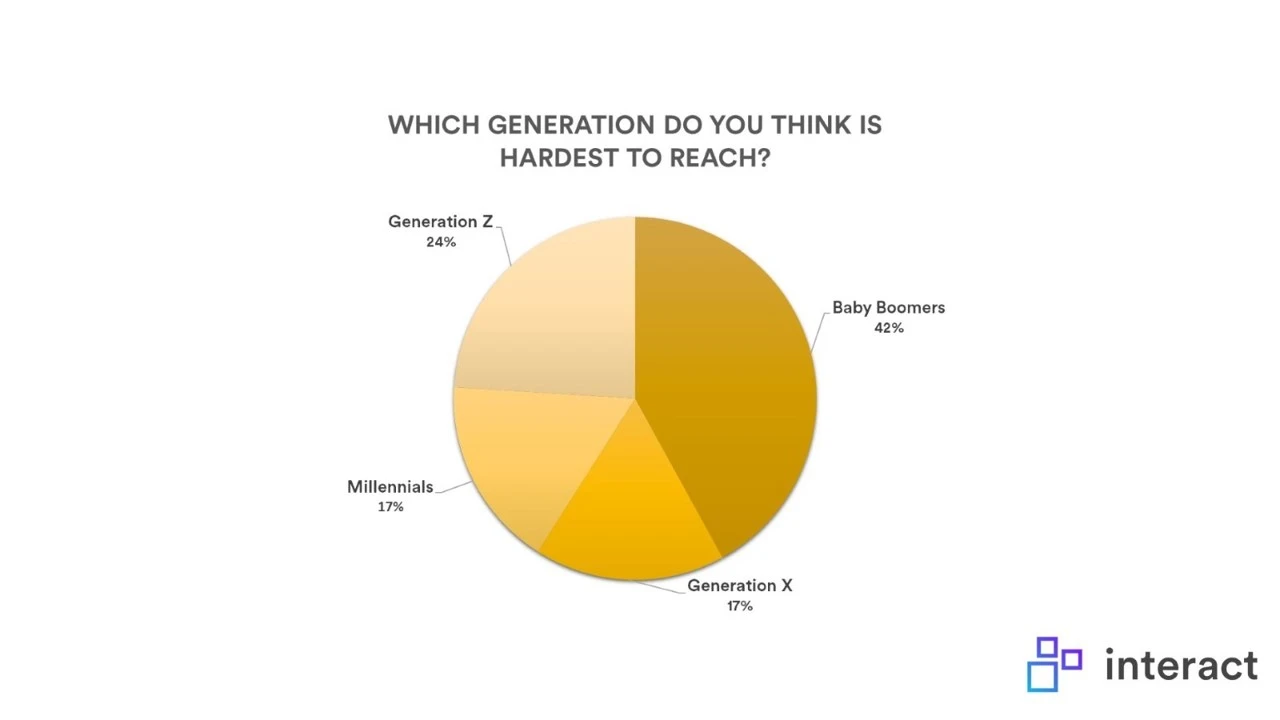
Insight: The presence of four generations in the workforce means that some organizations have employees with a wide range of technological skills and communicational preferences. From TikTok videos to in-person meetings, the modern communicator has to consider how best to deliver messages in ways that will resonate with a changing audience.
What was interesting here was that our respondents stated that the middle-aged cohort is easiest to reach, while engaging the oldest and youngest workers is a greater challenge.
This may be due partly to the age of the respondents themselves (mid-level and senior comms professionals often being in the Millennial/Gen X bracket), but also to Millennials and Gen X employees being the age groups who came of age with a mixture of email, instant messaging, and mobile technology.
There is no single process for creating comms that straddle the age gap in the workforce. Perhaps the best ongoing answer, however, is to continue taking advantage of integrated multichannel platforms that give communicators easy access to email, the intranet, mobile, digital signage, and more. It’s by operating across this suite that more people can be reached effectively.
Summing up the state of internal communications
Throughout 2022, we listened to employee communicators and found that their main challenges include maintaining culture, communicating cross-generationally, and finding the right tech mix for their digital workplaces.
These challenges will persist into 2023 and the people-focused teams entrusted to communicate, increase employee engagement, and listen to staff feedback will continue to be mission critical for organizations.
